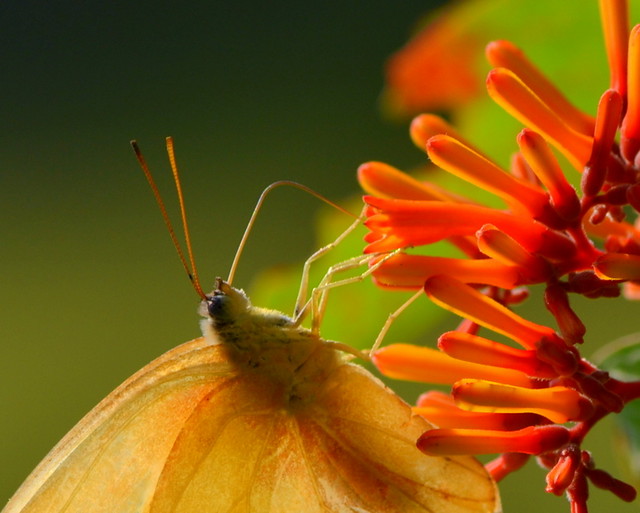
For his invisible attributes, namely, his eternal power and divine nature,
Not too long ago, a friend asked if I would consider teaching a class on photography. Your kind of photography, she emphasized.
I laughed. I don't know if I can, I answered. It's not that what I do is complicated or difficult to explain, it's just that I don't know what it is that I do -- it's simply the way I see.
Several years ago, I was driving my car down a back country road when something caught my eye at the edge of the thickets -- something moving, dangling or clinging, I suppose. I honestly don't remember, but I stopped the car, got out with my camera, and was taking pictures when a friend drove by and saw me. Pulling her car up beside me, she rolled down the window and shaking her head asked, whatever do you see to take a picture of?
I don't think I responded other than to laugh, but the answer is that I see what God shows me. I know this because I'm always asking Him to show me -- right here in my own backyard or the pasture and fields on our Pollywog Creek property.
It's because I photograph what God shows me in His creation that I'm reluctant to place a watermark on my photos. If God's invisible attributes, His eternal power and divine nature are clearly seen in what He has created, then my photographs should point to God and not me.
Nature photography enhances my devotional life -- to walk and pray and discover beauty in the thickets, fields and around the pond -- the beauty of life rising from dead places, symmetry and order in the life cycles of insects and wildflowers and the way all of life is nourished by light and rain and good rich soil.
It's deeply satisfying to sense that this is God's gift for me in this season -- and to offer the works of my hands {and camera} up to Him and to trust that He will do with them as He pleases -- even if every photo and lesson learned from clinging vines and loud-mouthed blue jays is for me alone.
I might someday teach a workshop on my kind of photography -- when the weather is cooler and I'm able to move around easier. For now, I'll share a few tips for nature photography that have worked for me -- tips that I've posted before, but I've been asked recently to share again.
- Before heading out the door, begin with prayer. Ask God to open your eyes to glimpses of His glory and to the beauty in the not-so-beautiful around you. Many of my photos are of common weeds.
- Get outside early. I shoot almost exclusively with natural light, and the best light is the hour or two around sunrise and just before sunset.
- I do not own a macro lens, but the weight of morning dew on insects makes it easier to get close to them for photos. The dew also adds sparkle to photos when you shoot into the light.
- Wear dark clothing or in colors that blend in with the surroundings. Avoid bright colors.
- Wear quiet shoes. It's much easier to sneak up on something that's likely to run or fly away if they don't hear you. Avoid flip-flops and sandals, they make too much noise. I like to wear ballet slippers or even two pairs of old heavy socks without shoes.
- Get as close to your subject as you can. For clarity and interest, fill the frame, leaving as little "white space" in the photo as possible.
- Shoot your subject from different angles. Kneel, sit, or place the camera on or close to the ground, if you can.
- Practice patience. Be willing to sit, lean against a tree or stand in one place for long periods of time. Birds, insects and other animals will often get closer or come to me if I'm still long enough. Capturing images of shy and easily frightened birds, like painted buntings, requires a lot of time to just sit still. I get as comfortable as I can and bring a few things with me, like a book, iPod/headphones, prayer list, etc.
- Work with what you've got. Wildlife will not cooperate. You can't tell a screech owl to move out of the shadows or a blue jay to stop hiding behind the leaves, but if you move around too much trying to get the best angle, your subject is likely to flee. Begin taking photos as soon as an image catches your eye and then slowly try to move around for a better angle -- stopping to take more photos along the way.
- Expect the unexpected. It's okay to have a particular photography subject in mind, but be open to surprises elsewhere. If I'm too focused on duplicating a prior encounter or experience, I'm likely to miss something new God wants to show me.
- Make it a habit to keep your camera batteries charged. At the end of every day, my camera batteries go in the chargers to be ready by morning. Put fully charged batteries in your camera, clean the lenses, and make certain there's a formatted memory card in the camera before you walk out the door.
- If your camera has been in a cool, air-conditioned house and you take it outside into warm, muggy air, the differences in temperature and humidity will cause condensation to form on the camera lens. To avoid this, I put my camera in the garage or on the porch about ten or fifteen minutes before I head outdoors so that it begins to warm up slowly and prevents that condensation from forming.
*Slightly edited from the archives
*All photos are from my Pollywog Creek backyard












